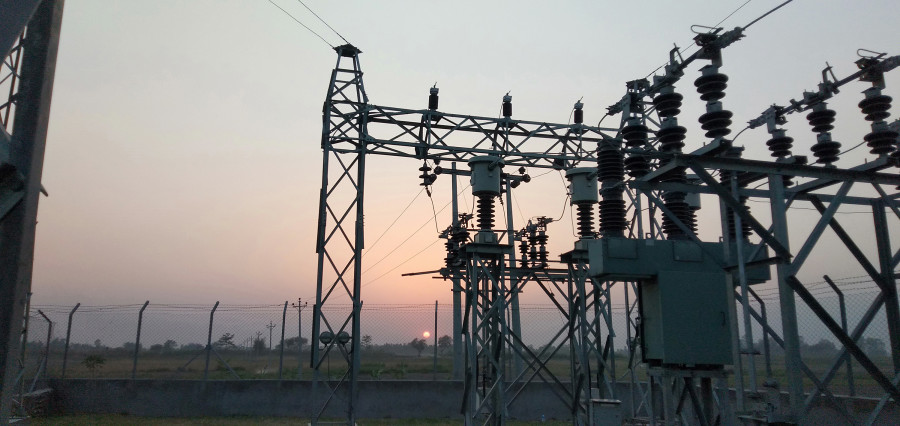Money
Nepal’s power infrastructure continues to grow
However, the country has fallen short by a wide margin in generation of additional power as it only met 9 percent of its generation target in the last fiscal year.
Prahlad Rijal
Nepal has added more than 600 kilometre of power lines to the country’s domestic and cross border electricity transmission network and built 30 new distribution substations in the fiscal year 2018-19, records show.
According to Kulman Ghising, managing director of Nepal Electricity Authority, the power utility expedited works to upgrade existing substations and build new transmission lines and distribution grids in line with the government’s policy of enhancing distribution capacity in strategic industrial zones and to improve reliability of electricity transmission throughout the grid.
“Earlier, we were transmitting power to various settlements through long distance, low-capacity 11 kV lines, and as a result the regions faced voltage fluctuations, drops and intermittent supply,” said Ghising.
Majority of the power lines added over 520 kilometre during the last fiscal are of mid-capacity 132 kV including Nepali portion of Raxaul-Parwanipur and Kusaha-Kataiya cross border transmission lines.
“As new high-capacity substations and transmission lines are now in operation, the distribution system has become more robust thus improving the voltage in those regions. We are also able to monitor and control leakages,” Ghising added.
The state-owned utility also achieved a major milestone with the commissioning of 153 kilometre of 220kV Khimti-Dhalkebar-Muzaffarpur cross border line which eased power import and export situation allowing the country to export surplus power as high as 200 MW to India during peak monsoon.
Also, six kilometre of underground cables were also installed in the New Chabel-Lainchaur power route.
Another significant achievement was witnessed by the country with the expansion of the long-delayed Godak-Phidim portion which added 85 kilometre of lines in the Kabeli Corridor.
However, power lines along the Kabeli Corridor, touted as the backbone of national grid in the eastern region, are yet to be fully commissioned as the final portion of the line remains to be completed, 10 years after the project began.
Also, the construction of major transmission lines, like the 132 kV Thankot-Chapagaun, 220 kV Bharatpur-Bardaghat, 400 kV Hetauda-Dhalkebar-Duhabi and 400 kV Tamakoshi-Kathmandu, has stalled due to land compensation and forest clearance issues and delays by contractors.
And the New Butwal-Gorakhpur cross border transmission line project, expected to convey surplus energy from Nepal to power-hungry Indian State of Bihar, failed to get off the ground as energy officials of Nepal and India are yet to sign an agreement to that front.
Despite expansion of the transmission network, eight districts in the country are yet to be connected to the national grid. Among the eight districts that remain to be connected, seven — Bajura, Humla, Jumla, Kalikot, Mugu, Dolpa, Rukum (East) — lie in the western region.
The state-owned power utility also built 30 new substations with a combined capacity to flow over 700 MW of electricity in the last fiscal. Out of the total 30 substations, eight 132 kV substations can flow 259 MW of power while 21 33 kV substations can evacuate over 120 MW to the grid.
A notable achievement for the country was the commissioning of high capacity 220 KV Dhalkebar Substation which enabled the electricity authority to import 320 MW during the dry season when the country’s power generation falls below 50 percent, compared to electricity generation in monsoon.
The same substation along with other points in Raxaul-Parwanipur and Kusaha-Kataiya route was used by the power utility few weeks ago to export 200 MW of surplus energy to India.
However, the country has fallen short by a wide margin in generation of additional power as it only met 9 percent of its generation target in the last fiscal year.
The Nepal Electricity Authority commissioned six medium and small hydropower projects, one solar plant and one state-owned scheme in the last fiscal year, adding only 71 MW to the national grid against a target of 760 MW set by the Energy Ministry.
The electricity authority had expected to launch nine projects within mid-July and add 160 MW to the grid. But it did not happen as works stalled at the Upper Trishuli 3A and Kulekhani 3 schemes. The largest plant to come online last fiscal was the Upper Trishuli 3A which churned out 30 MW from one of its two units in May.
Also, the much touted Upper Tamakoshi plant (456 MW) failed to roar into life in the stipulated time frame owing to delays by the contractor and complications during installation of penstock pipes. The deadline for completion of the country’s largest under construction plant has now been revised for mid-July, 2020.
In the current fiscal year, the electricity authority plans to issue commercial operation dates to 43 under-construction hydropower projects that will produce around 1,150 MW and the state-owned power utility is also constructing multiple transmission corridor projects in the eastern and central regions to evacuate and distribute power more efficiently.
The Ministry of Energy, Water Resources and Irrigation has planned to spend more than 50 percent of its budget for current fiscal year on building transmission lines and power distribution projects.




 6.53°C Kathmandu
6.53°C Kathmandu















